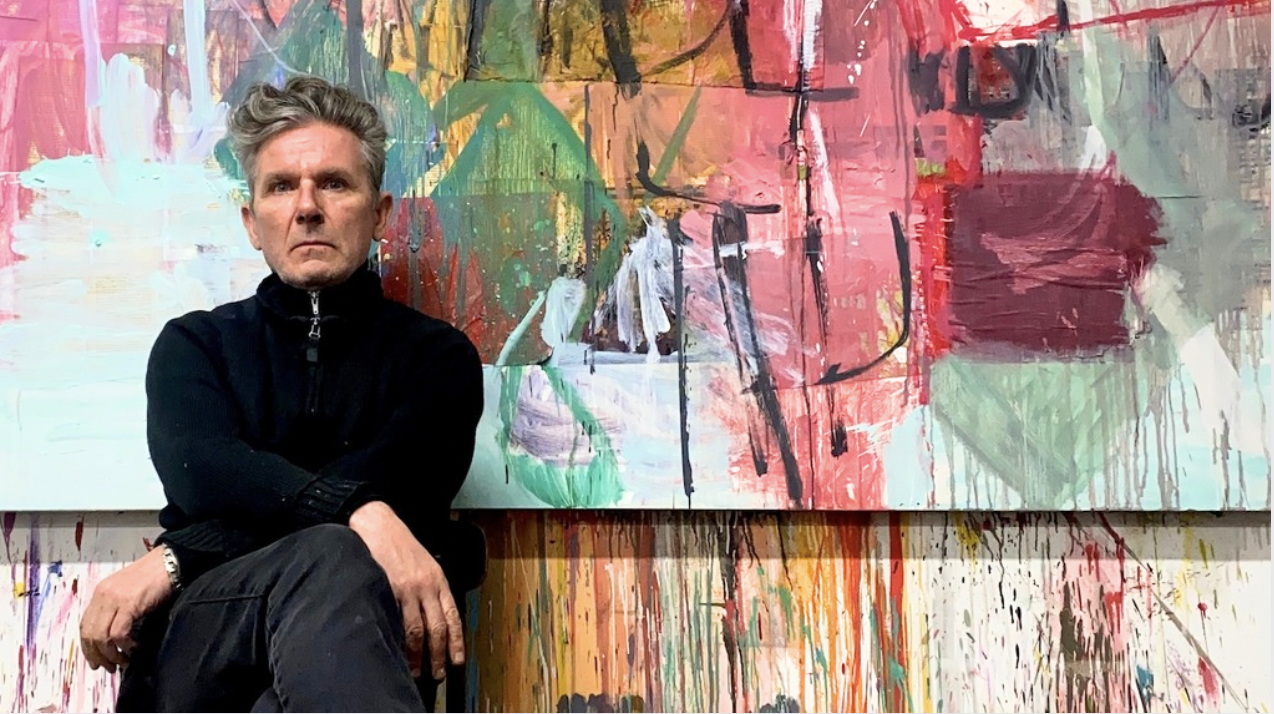
Karl Bielik, a distinctive figure in contemporary painting, creates visceral oil paintings that reflect his unique, process-driven approach. Known for working on multiple paintings simultaneously—up to thirty at a time—Bielik’s works embody a spontaneous dialogue between marks and colors. In his own words, he describes the outcome as a history of “doubt and decision-making,” a testament to the evolving nature of his artistic process.
Bielik’s method is characterized by layering: “Loose oily wounds and thick emulsions offset light glazes and dribbles.” He engages in a cycle of painting, wiping out, and layering, allowing each piece to breathe before revisiting it. “When a painting reaches a point where something interesting is going on, I leave it alone for a while and move on,” he explains. This “carpet bombing approach,” as he terms it, allows for a multitude of outcomes—each canvas an opportunity for discovery.
The artist’s background significantly informs his work. Bielik’s father, Attila, fled Hungary during the 1956 uprising, a monumental event that shaped his family’s history. Growing up in Bradford, England, Bielik was immersed in a culturally rich environment, shaped by his Hungarian heritage. He recalls, “Being half Hungarian played a big part in my childhood… It all felt exotic and way more interesting than the English side of the family.” This duality in his upbringing often influences the themes within his artwork, where remnants of his heritage seep in and out, only to be “obliterated/hidden in the making.”
Art wasn’t always a central focus for Bielik. Initially, his home bore little influence from the art world. “The only art in my parents’ house was an A3 print of The Haywain,” he reflects. It was the vibrant world of music—through album covers from iconic bands like Bowie and the Sex Pistols—that first ignited his artistic inclination. With no formal training in fine arts, Bielik transitioned through various creative disciplines before fully committing to painting at the age of thirty.
Bielik’s exploration of creativity doesn’t stop at paint and canvas; he is also the founder of the Terrace Gallery in London and a member of the band Lark. He describes his multifaceted artistic endeavors as interconnected, suggesting that music, painting, and curating share the same source of inspiration. “I feel and want to feel like a beginner in both art forms,” he states, emphasizing the beauty and struggle inherent in each pursuit.
His paintings are further distinguished by a diverse palette that includes both high-end and inexpensive materials. “I don’t have a set palette,” he explains, indicating a willingness to embrace both quality and lesser-known brands. This eclecticism in materials mirrors his approach toward art itself, where spontaneity reigns—yet is underpinned by an intense work ethic.
Despite the chaotic slant of his practice, Bielik finds structure in his methodology. “It’s about being in there and working,” he asserts, echoing the ethos that informs much of his work—a continuous effort, regardless of the outcome. His belief in the power of diligent practice manifests in various ways; sometimes, older works resurface for reexamination as he allows them to evolve, showcasing the long incubation period he values.
His artwork has been showcased in numerous exhibitions both nationally and internationally, including prestigious events such as The John Moores Painting Prize, The RA Summer Show, WAC Art Contemporary, The BEEP Painting Prize, The Marmite Prize, and The London Open. He is a member of Contemporary British Painting and serves as the Founder and Director of Terrace Gallery in London. Additionally, Bielik writes and performs with the band Lark, which is signed to Standard Lamp Records.
Through his art, Bielik challenges the conventions of the contemporary art scene, often commenting on its socio-economic dynamics. As a working-class artist, he perceives a disparity within the art community, often leaning toward the “good souls” in a largely middle-class landscape. His insights compel a consideration of the broader implications of artistic practice and perception.
Karl Bielik’s work, steeped in history and personal narrative, resonates with a depth that encourages viewers to reflect on their own interpretations of the painted journey. His dedication to process, exploration, and the unfolding nature of creation makes his paintings not only a representation of his artistic journey but also a mirror into the human experience.









